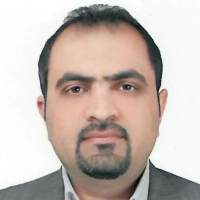Investigating the dynamics and expansion of urban areas using automatic training samples obtained from the combination of night light and medium resolution satellite imagery
Urbanization can be defined as social and economic development and thus, urban planners need timely information for service provision and management in urban areas. Due to the difficulties of traditional methods, automatic and semi-automatic methods have gained special importance. Therefore, remote sensing data and image classification techniques have been used to help identify different types of land use. Nighttime light emission data can help researchers effectively identify human activities and urban areas. These satellite images are collected from the surface of the earth at night and can clearly separate nighttime light emission of urban areas from the surrounding dark areas. Thus, it can be concluded that various types of data with different nature and capabilities (spectral, nighttime light, etc.) are available for any specific area each of which has its own advantages and limitations. As a result, using a combination of these data types will increase accuracy and reduce uncertainty. Algorithms and scientific methods enabling this combination are thus of great importance. The present study applies a combination of nighttime light emission and daytime multispectral images to produce automatic and high-quality optimal training samples and locate built-up areas.
Two study areas (in Babol and Kerman) with two different climates have been investigated in the present study. Also, DMSP and VIIRS nighttime light emission images and Landsat 5, 7 and 8 images collected during the statistical period have been used.
The present study has proposed an approach consisting of four main phases of pre-processing, feature extraction and production of initial training samples, selection of optimal training samples and finally classification and evaluation. Nighttime light emission images were corrected and primary samples including two classes of built and unbuilt areas were produced using the limit of automatic thresholds. Nighttime light emission is generally related with human activities, and thus, built-up areas usually have a higher nighttime light emission value compared with unbuilt areas which have a lower or zero value. Due to the saturation and blooming problems occurring in DMSP images and the relatively low spatial resolution of nighttime light emission data, training samples extracted from built areas using these data still include unbuilt areas such as water bodies and vegetation cover. Therefore, an index has been developed using features extracted from nighttime light emission and Landsat images. Considering the inverse relationship between various features of urban and rural areas (vegetation cover and soil) in LST images obtained from the thermal band of Landsat images and the NDVI vegetation index obtained from Landsat and features of urban areas in nighttime light emission image, an index was provided which maintains the main characteristics of urban areas in nighttime light emission images while minimizing saturation and blooming. Finally, time series of classified images was investigated and urban expansion was analyzed.
Following nighttime light emission data correction, an upward trend was observed for the values of pixels collected from each city which verifies the pre-processing stage. Then, an appropriate automatic threshold limit was selected in accordance with the features of each nighttime image and applied to produce the initial training samples. Nighttime light emission images were corrected using the introduced index to minimize saturation and blooming in urban and suburban areas. Training samples thus optimized were used for final classification. Due to the low quality of initial training samples, classified pixels obtained from urban areas did not confirm to reality. Thus, classification faded in Kerman city in some years and practically no classification was performed which shows the low quality of initial training samples. Due to the low spatial resolution of nighttime light emission images, the size of samples collected from built-up areas was falsely detected to be large, and thus, there were definitely samples related to vegetation, soil, and etc. in the specified range. In the next step, classification was performed using optimal training samples in which built-up regions were modified. In this way, results got closer to the reference data and reality. In fact, using a combination of nighttime light emission and Landsat data can overcome the limitations of both methods.
Selection of training samples is considered to be the main and fundamental challenge of classification. With a valid training sample, classification is precisely performed. Since, traditional and manual methods of obtaining training samples are costly and time-consuming, automatic and semi-automatic methods have become specifically important. Therefore, the present study has classified and extracted built-up areas using satellite images. The initial training samples can be obtained automatically from nighttime light emission images, however high saturation and blooming of these images have reduced their quality. To solve this problem, a nighttime light index has been developed based on the relationship between the characteristics of urban areas in optical images and nighttime light emission images which has minimized related problems in both study areas with two different climates to a great extent. This shows the flexibility and effectiveness of the proposed method. High-quality training samples thus obtained were highly effective in the final classification phase. Investigating urban expansion time series has shown that urban growth and expansion have generally occurred around the city.
- حق عضویت دریافتی صرف حمایت از نشریات عضو و نگهداری، تکمیل و توسعه مگیران میشود.
- پرداخت حق اشتراک و دانلود مقالات اجازه بازنشر آن در سایر رسانههای چاپی و دیجیتال را به کاربر نمیدهد.


